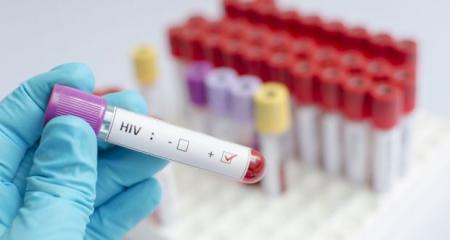HWN Jobs
- KLINEGEARS ENERGY LIMITED JOBS
- NOBLE GUIDE ACADEMY (2016) JOBS
- HAVEN PHARMACY (NOVEMBER) JOBS
- PAEDIATRIC CARE HOSPITAL JOBS
- HOT JOBS AT PEREZ MED CARE
HWN Blogs
- Classical heart healthy foods on HWN BLOGS
- Classical Warning Signs When The Human Liver Begins To Fail on HWN BLOGS
- Myths About Hygiene, Soaps, Germs, Sweat and Smell on HWN BLOGS
- Hernia does not heal on its own on HWN BLOGS
- Classical Essential Oils That Improves Focus Cum Memory on HWN BLOGS
news - British man undergoes pioneering treatment to cure HIV on HWN HIV UPDATE back to all News
British man undergoes pioneering treatment to cure HIV on HWN HIV UPDATE

A British man with HIV undergoing a pioneering treatment to cure him of the disease has shown “remarkable” progress, doctors have claimed. Scientists treating the 44-year-old patient are now hopeful of a breakthrough in what has been described as “one of the first serious attempts at a full cure for HIV. The man, who has remained anonymous, is the first of 50 people to complete a trial using the two-stage attack on the deadly virus. The research is being carried out by a collaboration of five of Britain’s top universities organised by the NHS. Mark Samuels, managing director of the National Institute for Health Research Office for Clinical Research Infrastructure, told the Sunday Times: “This is one of the first serious attempts at a full cure for HIV. We are exploring the real possibility of curing HIV. This is a huge challenge and it’s still early days but the progress has been remarkable. The trial patient told the newspaper that recent blood tests showed no detectable HIV virus was present, although it was too early to confirm that the treatment had worked. The new therapy aims to overcome a major barrier to clearing the virus from a sufferer’s body that has challenged researchers for decades. Current methods using antiretroviral therapies (Art) fall short of ridding patients of HIV, as the virus can hide out of the drugs’ reach in the immune system’s T-cells. By sheltering in dormant T-cells the virus can later take over its host and use it to produce thousands of copies of itself, should Art no longer work. The research by Oxford and Cambridge universities, Imperial College London, University College London, and King’s College London, is testing a “kick and kill” technique to first expose then destroy the virus. First a vaccine helps the body find infected T-cells. This is then followed by a course of the drug Vorinostat that awakens the dormant T-cells, which then begin producing HIV proteins that act as a homing beacon to the immune system. Imperial College London consultant physician Professor Sarah Fidler said the treatment worked in the laboratory and there was good evidence it will work in patients. However she added: We must stress we are still a long way from any actual therapy.
Source: WWWN, HWN Africa.
: 2016-10-02 19:01:27 | : 2252
HWN News
- First Polish infant to survive on extreme dialysis on HWN MEDICAL MIRACLES
- Drug resistant tuberculosis end game on HWN INSIGHTS
- Too many women opting for caesarean sections (CS) to give birth on HWN SEX EDU
- The intelligent, strong and fearless Nurse that conquered Ebola on HWN ARCHIVE
- Medhi Benatia, down with injury on HWN SPORTS






